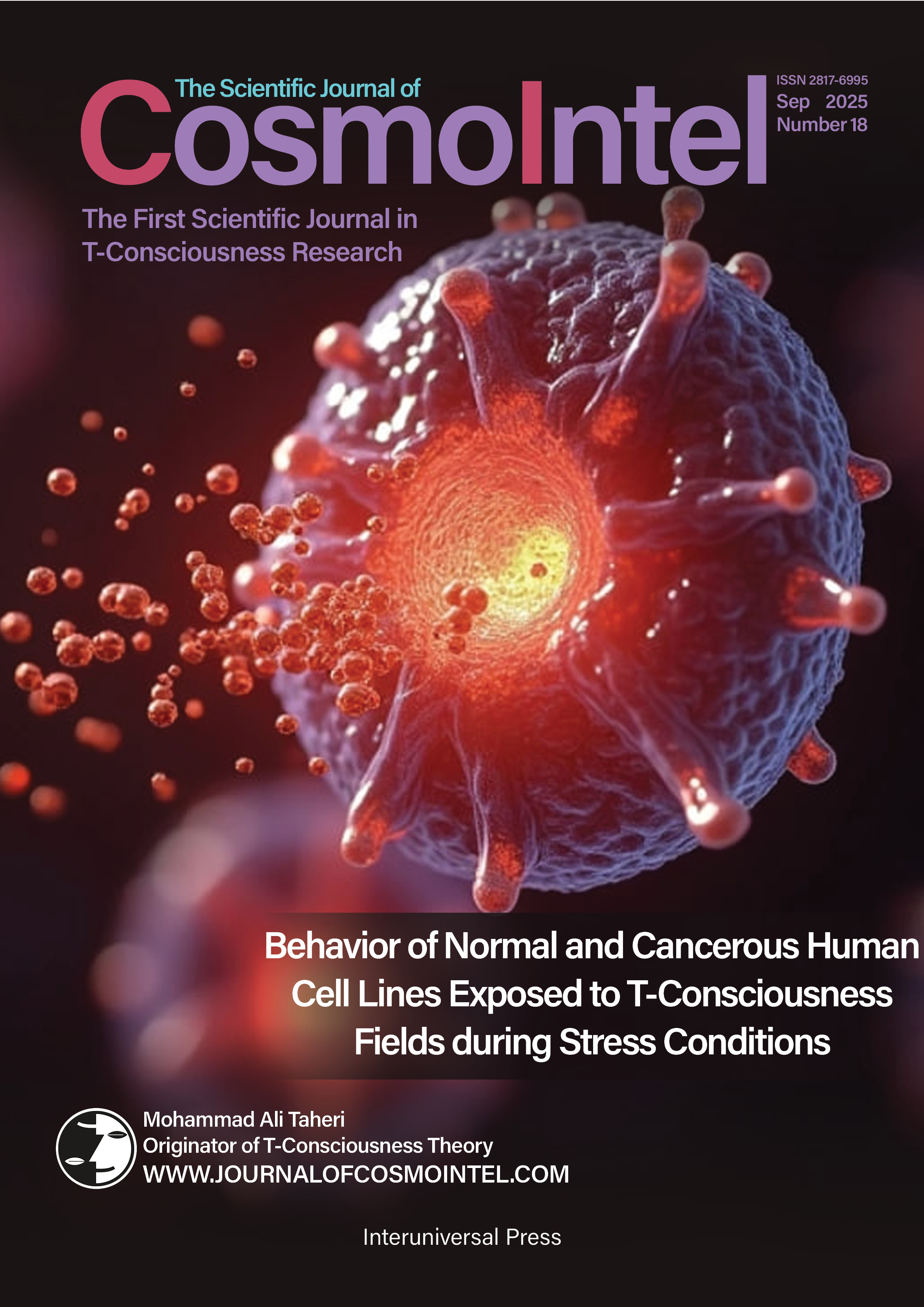T-Consciousness Fields Inhibit Apoptosis and Promote ATP Production in HEK-293 Cells Under Microgravity Stress
Main Article Content
Keywords
T-Consciousness Field, Microgravity, Clinostat, Cell cycle, Information
Abstract
T-Consciousness Fields (TCFs) are introduced as non-physical entities, with their effects initiated through the human mind. It is hypothesized that information transmitted via TCFs may influence the behavior of studied subjects. The present experiment aimed to investigate the effects of TCFs on cell cycle progression and ATP production in the HEK-293 cell line under both microgravity (MG) and Earth gravity (1G) conditions. To achieve this, cultured cells were exposed to TCFs for 24 hours following an initial 24-hour incubation period, under either microgravity (MG) conditions, simulated by clinostat rotation, or a standard Earth gravity (1G) environment. Untreated cells served as the control group. Flow cytometry was used to assess the distribution of cells across different phases of the cell cycle, and ATP concentration was measured by evaluating luciferase enzyme activity. The results showed a significant increase in the sub-G1 phase under microgravity (MG) conditions (p < 0.05), indicating elevated apoptosis. In contrast, TCFs-treated samples maintained sub-G1 levels comparable to those under Earth gravity (1G). Additionally, TCFs treatment significantly increased the S phase under MG (p < 0.05) and the G2 phase under 1G (p < 0.05). ATP concentrations were markedly reduced under MG in both treated and untreated samples compared to 1G (p < 0.05). However, in the clinostat environment, ATP levels in TCFs-treated samples were approximately twice as high as those in untreated controls (p < 0.05), whereas no significant difference was observed under 1G conditions. These findings suggest that the reduced sub-G1 phase in TCFs-treated samples under MG reflects apoptosis inhibition, while increased ATP levels and prolonged S phase indicate enhanced cellular efficiency under stress. The distinct outcomes under MG and 1G imply that the information transmitted by TCFs may vary depending on environmental conditions. Further studies are needed to elucidate the underlying mechanisms of TCF action.

